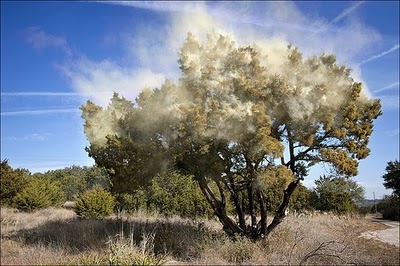
According to the American College of Allergy Asthma and Immunology..
There’s a reason the local news provides regular updates on pollen counts each spring: Tens of millions of Americans suffer allergy symptoms caused by exposure to tree, grass and weed pollens.
Pollen is a fine yellowish powder that is transported from plant to plant by the wind, by birds, by insects or by other animals. The spread of pollen helps to fertilize plants — and can mean misery for seasonal allergy sufferers.
If you have a pollen allergy and breathe in pollen-heavy air, you may experience symptoms such as:
- Sneezing
- Nasal congestion
- Runny nose
- Watery eyes
- Itchy throat and eyes
- Wheezing
Pollen can also aggravate asthma symptoms, including increased coughing and wheezing.
One key tip is to get ahead of pollen season. For example, if your symptoms are typically at their worst in mid-April, start taking your medications at the end of March. Likewise, if the weather calls for a run of warm weather toward the end of winter, it might be smart to begin taking your medication at that time as well. Ask your allergist about medications that can be taken in advance of pollen season.
Two immunotherapy options are available for those with severe pollen allergies:
- Allergy shots can help your body build resistance to pollens.
- Tablets that dissolve under the tongue are now available by prescription for people suffering from grass and ragweed allergies. These medications must be started 12 weeks before symptoms are expected to begin.
It’s a good idea to keep an eye on the predicted pollen counts, particularly if you plan to be outdoors for a long period of time. (If you are planning to be outside working around plants or cutting grass, a dust mask can help.)
But even if you see a high pollen count predicted in the newspaper, on a smartphone app or on TV, it doesn’t necessarily mean that you will be affected. There are many types of pollen — from different kinds of trees, from grass and from a variety of weeds. As a result, a high overall pollen count doesn’t always indicate a strong concentration of the specific pollen to which you’re allergic.
The opposite can be true, too: The pollen count might be low, but you might find yourself around one of the pollens that triggers your allergies.
Through testing, an allergist can pinpoint which pollens bring on your symptoms. An allergist can also help you find relief by determining which medications will work best for your set of triggers.
